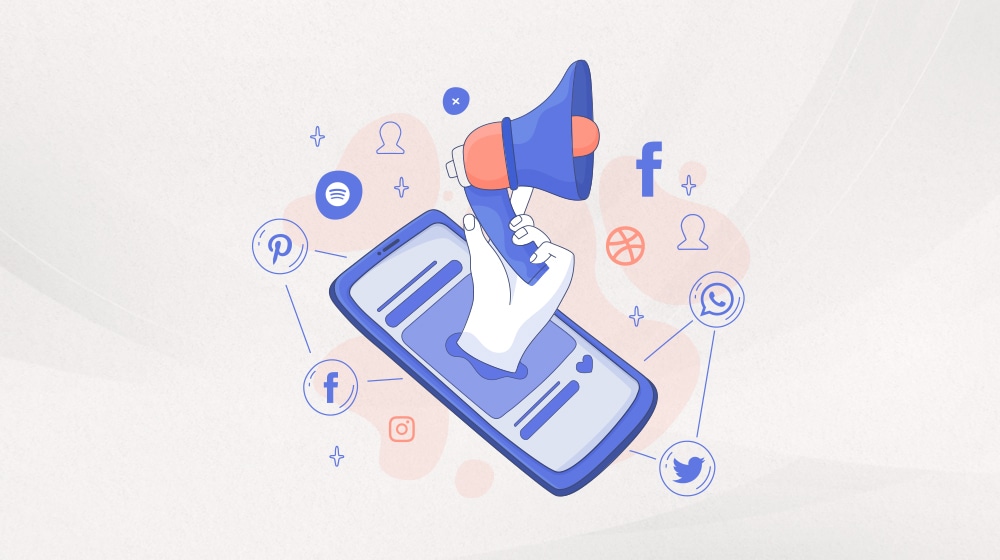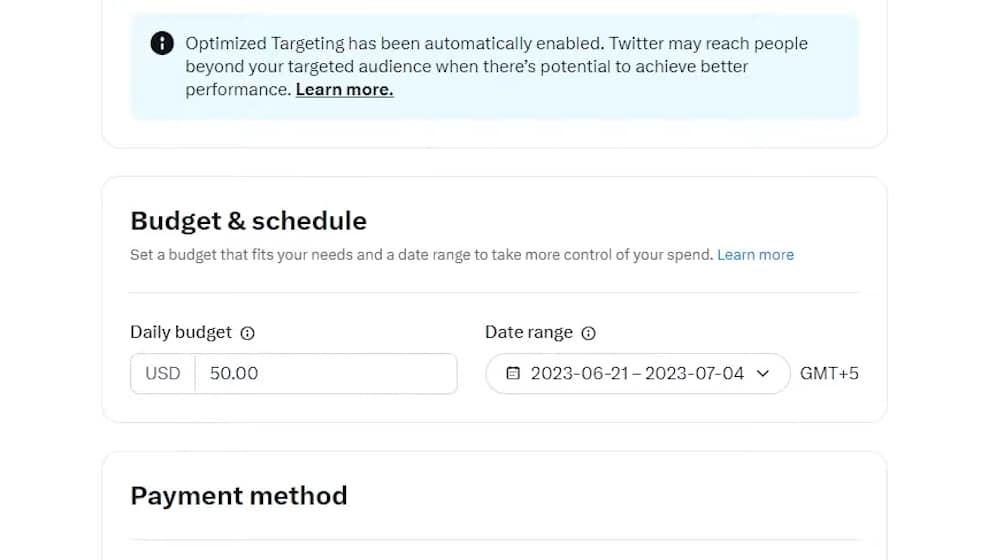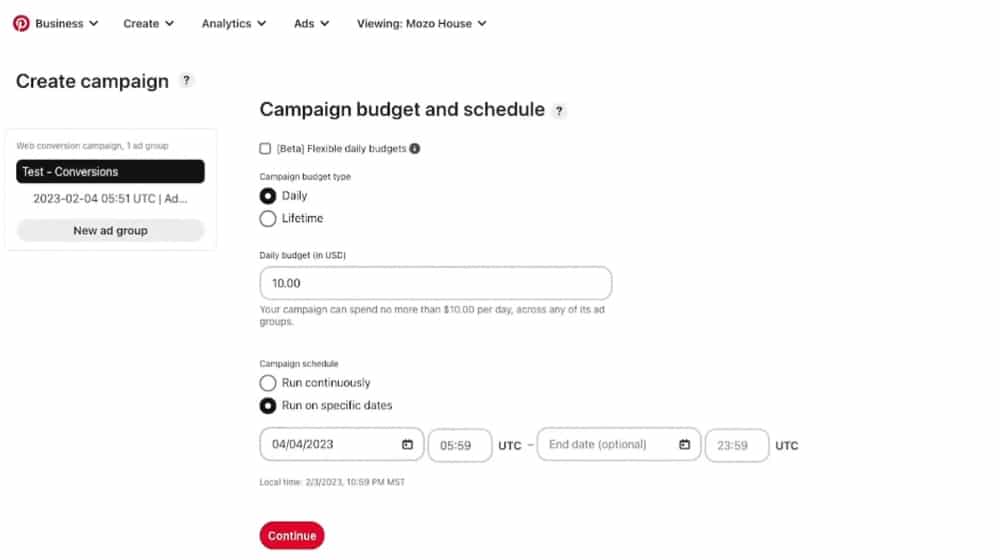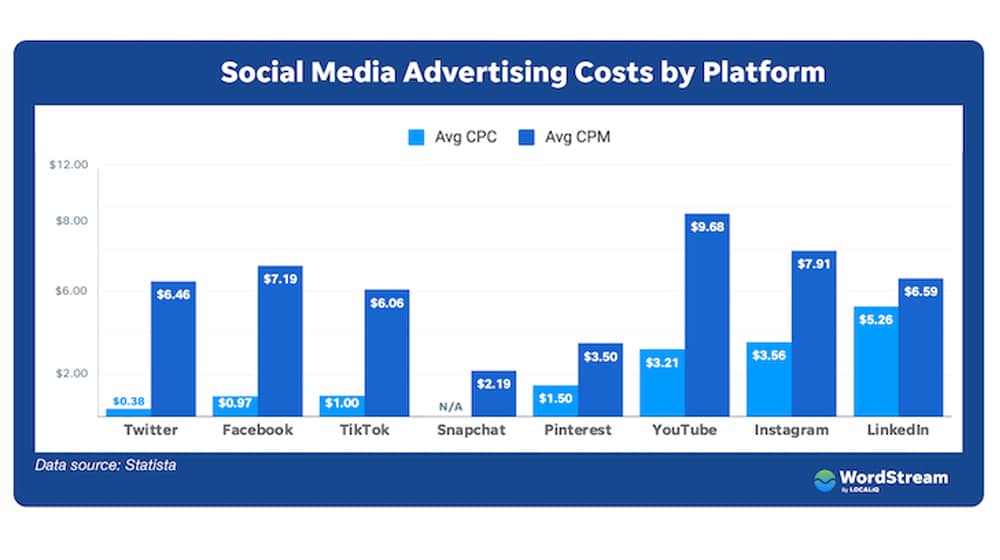Study: What is The Average Cost of Social Media Advertising?

One of the dilemmas we marketers face in the modern era of marketing is that every channel kind of sucks. Some just take a long time before they work. Some only work if you dump money at them. Some of them seem to get worse every year but have no real competition, so they stay market leaders regardless. Some are all of the above. I'll leave it to you to guess which ones I'm talking about there.
Social media is kind of all over the place. Every platform has hundreds of millions, if not billions, of users, but reaching more than an insignificant fraction of them is virtually impossible without spending money on advertising. Then you look at the ad platforms, and your eyes glaze over with the dozens of different placement options, bidding schedules, and all the rest. And don't even get me started on the targeting!
On top of all of this, since social media is effectively the only way to directly reach and interact with followers and potential fans, you're kind of stuck. You need to use the platforms, and if possible, you need to pay for ads. The platforms know this, so they slowly turn the dial labeled "advertising costs" while they keep looking back at the crowd and listening to the boos.
It's been a little while since I did a deep look into advertising costs, so I figured now's a good time to do it. With Twitter cratering and advertisers pulling out in droves, is advertising there any cheaper or better? With Facebook, is it the same old story, or have things changed significantly? What about those other platforms? I recently wrote a dive into TikTok advertising, which you can check out, at least. Let's dig in, though, and see how the market looks.
Examining Minimum Daily Spend
For small businesses, individuals looking to market themselves, and others in a similar boat, one of the more important figures is the minimum spend. Ad networks won't give you the time of day unless you're willing and able to pay a certain amount for ads each day, but what that certain amount is will vary. Some of the high-end ad networks set that number pretty high, while others keep it low. Here's what you can expect to spend at the absolute bare minimum on each ad platform.
Facebook and Instagram
Since Facebook and Instagram use the same ad platform on the back end (part of why Facebook bought Instagram in the first place), they'll be lumped together for most of these headings.

In this case, there are three relevant minimums.
- $1 per day, or $30 per month, for view/impression-based ads.
- $5 per day, or $150 per month, for click, like, or view-based ads.
- $40 per day, or $1,200 per month, for app install ads.
You aren't locked into a full month of payment like you would be on some platforms and can pay by the day, at least. It's pretty palatable to run ads for a week or two at a time, especially if you're only aiming for impression and awareness ads.
YouTube
YouTube, powered by some offshoot of Google Ads that they keep changing and toying with, has a flat $10 per day fee for advertising. Of that, practically none of it actually goes to creators, of course. If the channels are even eligible for monetization, a good portion of what they would earn just ends up funneled to Google or to whatever copyright troll has claimed their videos this week.

In related news, YouTube is reportedly starting to push back against ad blockers for the first time in years, which is riling up a lot of people who aren't used to how obnoxious and intrusive their ads can be. Either way, if you're going to advertise on YouTube, it's probably better to go with influencer marketing style sponsored content than simple paid ads, but that's kind of outside the scope of this post.
LinkedIn is swiftly becoming one of the better social networks to market on, at least if you have ads that are relevant to the kinds of people using the site. Since remote work exploded during COVID-19 and a ton of people started investing more into their tech skills to get better jobs, LinkedIn has become a very active place. Of course, AI scrapers, resume bots, and recruiters are making it kind of a hellish experience for a lot of people, but that's neither here nor there when it comes to the ads.

LinkedIn's minimums are $2 per click (which is fairly high for a lot of ads, but their platform is pretty targeted) and $10 per day.
Twitter is in a constant state of flux right now. Elon is making changes off the cuff with pretty much no warning, saying one thing and doing another, and kind of just doing things arbitrarily, like a dog. A lot of major advertisers have pulled out, and while some have quietly come back, there's still plenty of pushback on the site.

Right now, there's no listed minimum for ads on Twitter. They're probably happy to get any money they can. I wouldn't be surprised if they try to require a Twitter Blue subscription or something moving forward, though.
Pinterest hasn't been big news for a while, but they've been quietly chugging along in the background with no scandals and no drama to speak of. At least, none that I'm aware of; if I'm missing any juicy gossip, let me know!

As far as ad costs, it's $2 minimum for view/impression ads and 10 cents per click for CPC ads. All in all, it's pretty cheap! This might be one of the better social networks to use for advertising at the moment, honestly.
TikTok
If you want a deeper dive into TikTok, check out my post on it. They have two semi-overlapping minimums for ad spend. You have to put up $50 per day per ad campaign and $20 per day per ad group. So a campaign with one group in it would run you $50 minimum, two campaigns with one group each would be $100, and one campaign with three ad groups would be $60.
We create blog content that converts - not just for ourselves, but for our clients, too.
We pick blog topics like hedge funds pick stocks. Then, we create articles that are 10x better to earn the top spot.
Content marketing has two ingredients - content and marketing. We've earned our black belts in both.

If there are other social networks you'd like me to cover, let me know.
Average Cost Per Click and Cost Per Mille
Since every ad network functions in a mostly unique way, it can be hard to compare them. Minimums are one thing because it's a floor you have to reach to even be able to participate. But what do you get for that payment?
A ton of different factors go into calculating the "bang for your buck" you get with your ads. How narrow and effective is your targeting? How well do you know your audience, and how well can you craft a message to reach them? What industry are you in, how compelling is your offer, and what is your conversion rate?
Cost Per Click
That said, having a broad, general, baseline average CPC can be a useful benchmark so you know if you're above or below average. For more specifics, you'll want to dig into your industry/niche and see what averages are for competitors.

In general, though, here's what you might be looking at (data according to WebFX.):
- Facebook: 97 cents per click.
- Instagram: $3.56 per click.
- YouTube: $3.21 per click.
- LinkedIn: $5.26 per click.
- Twitter: 38 cents per click.
- Pinterest: $1.50 per click.
- TikTok: $1 per click.
So Twitter is the cheapest by far, but of course, it's just tweets, so getting a click isn't worth a whole lot. Conversely, LinkedIn is the highest because people there are less likely to be clicking on ads, both because they're generally tech-savvy enough to be blocking them and because they're usually there for a purpose related to job hunting, not just general browsing, and don't want to be distracted. Everyone else floats in the middle.
Cost Per Mille
Cost per Mille, or per thousand (views, typically), is your other usual benchmark. It's a slightly less useful metric because, while clicks can be tangibly beneficial, views can be completely worthless. But, it can still present an opportunity. If views are inordinately cheap compared to clicks, and you're pretty sure you can get clicks from CPM ads, you can get cheaper ads by running them as CPM instead of CPC.

So, let's compare the CPM averages to the CPC averages above.
- Facebook: $7.19 per 1,000 impressions.
- Instagram: $7.91 per 1,000 impressions.
- YouTube: $9.68 per 1,000 impressions.
- LinkedIn: $6.59 per 1,000 impressions.
- Twitter: $6.46 per 1,000 impressions.
- Pinterest: $30 per 1,000 impressions.
- TikTok: $10 per 1,000 impressions.
You can see that, at least at the moment, there isn't really a clear good opportunity to use CPM to circumvent CPC costs. In fact, it's kind of the other way around for a few of these platforms as long as you can convert those clicks into conversions. Of course, that's always the hard part, right?
It's one thing to talk about how much you're forced to pay and another to talk about how much you should pay. Unfortunately, it's basically an impossible question to answer in generics. Every company will have their own unique financial situation and breakpoints.
Here's the way I see it.
First, start off with a reasonable minimum. It doesn't have to be the bare minimum that the platform forces you to pay; it can be higher, but it should be a decent "experimental" budget. Aim for something lower than you would put in if you fully invested in the platform but high enough to get statistically relevant data.
Then, use that budget to run a variety of test ads. Check out different kinds of ads, formats, CTAs, and more to see what kinds of results you can expect. Many of these will fail, and that's fine; you aren't going to be perfect when you start running ads.
If you can't break even or turn a profit no matter how hard you try, you might just not be in a position to use that particular social network using the resources at your disposal. You might try outsourcing your ads to a professional ad company, or you might re-evaluate the platform and your audience, or you might need to hire some talented copywriters instead of trying to get AI to stand out from all the other AI-generated content (it won't. Stop blindly using AI.)

If you find, on the other hand, that you're able to turn a profit on your ads, you can ramp up your investment until that stops being the case. Remember, ads aren't an infinite money button; at some point, you'll saturate your audience, and spending more money won't get you any more returns. That's the maintenance point you're looking to achieve, and then optimize for lower costs.
Why am I being cagey about listing actual values here? It just varies way too much. I've worked with and talked to owners of companies that would run $500 per month in ads across two or three social networks, and even that feels like a lot of strain on their budget. I've also worked with and talked to business owners who don't even blink at signing off on $15,000 per month per platform. It's impossible to speak with any generalities that apply across the board.
Remember, too, that there are costs associated with running ads that aren't given directly to the ads platform. You pay for images and video, you pay for copywriting, you pay for research and case studies on your audience, and more. You might also need to pay for ongoing social media management and organic feed content to keep your profiles active outside of your advertising stream.
Did I answer your questions? If not, feel free to ask for clarification in the comments. I know this mostly just touches on the surface of social media advertising, but to be truly comprehensive would involve more data and resources than I have on hand. And if you're on the hunt for more information, why not check out my other blog posts? There's a plethora of information available to you entirely for free, and you're bound to find an article useful to your particular situation.






Comments